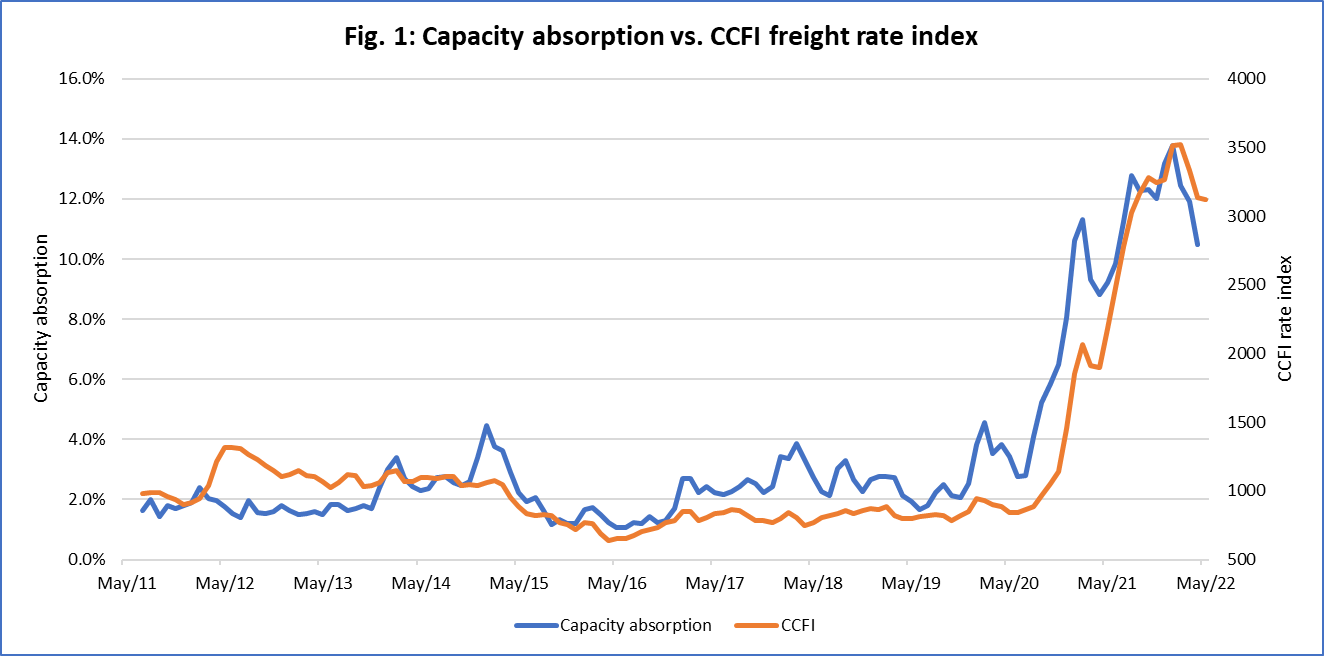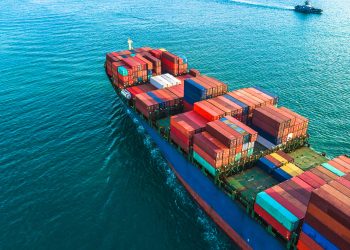Vessel delays are showing signs of improvement, and the terminal congestion indicators are also showing getting better, Sea-Intelligence’s Sunday Spotlight reports.
However, the congestion situation is still far from normal. More specifically, while 10.5% of the global fleet is still unavailable due to supply chain delays, it has dropped from 13.8% in January.
[smlsubform prepend=”GET THE SAFETY4SEA IN YOUR INBOX!” showname=false emailtxt=”” emailholder=”Enter your email address” showsubmit=true submittxt=”Submit” jsthanks=false thankyou=”Thank you for subscribing to our mailing list”]
This means that 3.3% of the global fleet has been released back into operation from January to April. In addition, freight rates are highly correlated to the capacity absorption rate, showing how this loss of capacity is the most important factor in the ongoing crisis.
It appears that the capacity absorption has acted as a leading indicator for rate developments, since the congestion problems began in earnest during late 2020
On terminal congestion, Sea-Intelligence notes that on North America, the index has been gradually increasing since reaching an apex of a little over 80% in January 2022, but still remains at a highly elevated level.

However, what is interesting to note is that in Europe, there has been continuing substantial improvement in the overall congestion index over the past month – although it should also be noted that despite the very visible decline, the level of congestion is still very high, compared with pre-pandemic normality.
On a port level, distinct improvements are seen in Spain, Italy, and Greece, whereas at the other end of the scale there is not much improvement in Rotterdam and Hamburg.






























































